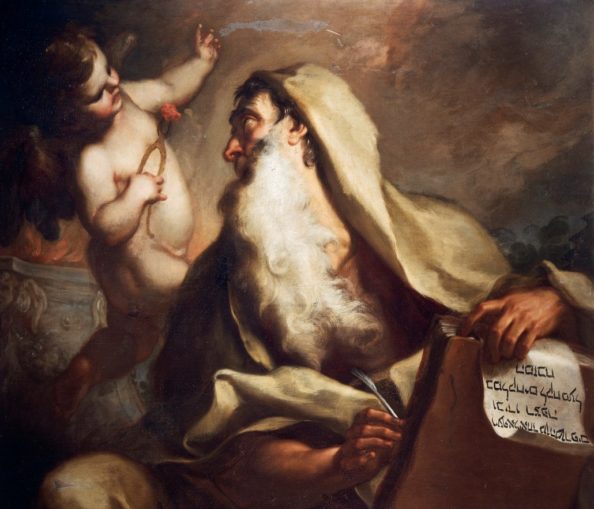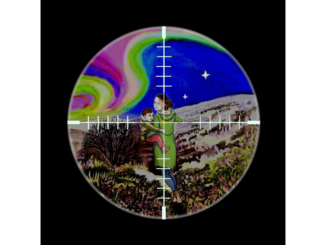
Antonio Balestra [Public domain], via Wikimedia Commons
This is the second half, well final third perhaps, of the previous article about Isaiah published a few weeks ago and in this autumnal season as we start looking forward to Advent and then Christmas, it seems to make sense to consider the extraordinary prophecies in Isaiah relating to the First Coming of the Messiah – or Christ as we call him – which preceded the actual events by at least six centuries. Given that we should all be familiar with the main elements of Jesus’ birth, life and death I shouldn’t need to recount them again as they appear in the Four Gospels.
Firstly, however, I want to show my hand a little as to what I have been trying to do in my part completed series of articles on the Old Testament Hebrew Prophets – so far we have covered Jonah, Jeremiah, Elijah and Job, although strictly speaking the latter wasn’t a Prophet. The Bible, above everything else, is the founding document of Western Civilisation and Thought – and that’s not to decry the contributions from elsewhere – but it’s like the native population in modern multicultural Britain – overlooked, scorned, neglected, subject to widespread ignorance, but without it nothing works or makes sense. It’s the key to understanding most great Western literature, our culture, our history, our premises about science and a comprehensible universe, our laws, the idea of human rights, the relationship between individual and state etc. And if you don’t understand yourselves, what you are, where you’ve come from, what binds us together, you haven’t got a chance going forward.
So it’s important to understand it as a foundational text – or set of texts – when it was written, who wrote it and why, the context of the times in which the authors were writing because they were surely influenced by them, and what it was supposed to communicate. Now most people have a very shallow understanding of it as a whole, even most Christians, and some chunks are more completely obscure and neglected than in earlier times, and for varying reasons.
Now that’s all fine, but even if one has some familiarity with the more well known stories, e.g. the Exodus or St Paul’s missionary work, one might be surprised to learn that there are far deeper things going on beneath the stories and accounts. This is partly because people just read the stories in isolation, rather than stand back and consider a book of the Bible as a whole, let alone the whole Bible itself. Hardly anyone does that, but it is well worth the effort because it’s quite mind-blowingly extraordinarily profound as a literary text written over two millennia, let alone as a book claiming (bear with me here) to be the divine revealed truth as inspired (not dictated) through human intermediaries. And for me, that’s the stunning thing I have learnt as part of my research and reading for these articles.
Consider a piece of woven cloth. You start by laying out the fibres in one direction and then weave others through them at a right angle. Tightened they hold together and make something of utility. In this series of articles, not only have I been trying to show what the central guiding purposes of the individual books were, as perceived by their authors (say these are the vertical fibres) but to lay in place a few building blocks through which to start weaving the horizontal fibres so you start to get a sense of how the Bible hangs together and creates a thing of profound utility, the foundational garment of our civilisation if you will. Sure, there are some strands borrowed from the Greeks, the Romans, the Enlightenment etc, but without the basic weave of the Bible they would not hang together to form the best civilisation that man has devised.
Now I know these articles are challenging, intellectually demanding, despite my best efforts to render things comprehensible to the layman (and woman), they may be long and very intense, but I hope you will stick with them and come with me on a voyage of discovery. The trip will be difficult, even challenging our comfortable assumptions, but when we’ve arrived at the other side I hope you will at least understand how we got there, and hopefully think the effort worthwhile.
Isaiah’s Suffering Servant
The first and comparatively short horizonal thread is Jesus himself in the person of the Messiah’s first coming, or the ‘Suffering Servant’ as Isaiah calls him in the chapters centred on chapter 53 and the last few verses of chapter 52. If you have a Bible to hand it might be worth having a quick look at this passage. See how closely many details of Isaiah’s prophecy match those of Jesus’ life as laid out in the Four Gospels:
- He had no form or comeliness – the Messiah was ordinary looking, just a humble working man, definitely not a gentleman in the prevailing Greek-speaking Eastern Mediterranean of the time – a gentleman was ‘kalos kai agathos’ or ‘beautiful and noble’ – so the Christ is definitely not nobly born but of ‘ugly’ lower class stock. And yes, that’s exactly how the Romano-Greek elite saw the 98% of humanity below them – they were Untermensch to varying degrees. The Gospels say he was born a humble carpenter.
- He was despised and rejected by his fellow men or countrymen (the Jews) and experienced many sorrows and great suffering.’ ‘Nuff said.
- People hid their faces from him, i.e. denied him. Well Peter did thee times on the night before the crucifixion, and the other disciples ran away and hid.
- He was wounded and tortured: anyone who has seen the film ‘The Passion of the Christ’ knows exactly what scourging and crucifixion involved, and would say that this is classic understatement, almost English.
- We all have gone astray like lost sheep. The parable of the Good Shepherd anyone?
- He was afflicted and didn’t speak in his own defence. The account of His trial at the hands of the Temple authorities, and later Pontius Pilate, is quite clear that Jesus did not defend himself because the verdict was already decided.
- He was led to his death like a lamb to the slaughter. The Twelve Stations of the Cross look very familiar to this – there was no attempt to escape or resist. The New Testament, and Jesus, repeatedly used the image of a slaughtered lamb to symbolise him, something I may come back to in a subsequent article because there is great significance in this concept.
- He was buried in a rich man’s grave, having been executed among the wicked. This matches the two robbers crucified alongside Christ and the fact that the wealthy Joseph of Arimathea had Jesus’ corpse interred in the grave he had reserved for himself.
- God allowed his ‘Suffering Servant’, his ‘own offspring’ to die to redeem the Sins of all mankind. Well, Jesus was always explicit that this was the mission of his life.
- He, the ‘Suffering Servant’ would see the fruits of his suffering and life achieve world changing results – a clear indication that the Messiah would rise from Death and ascend to immortality with God; also including that many subsequent people would believe his message and achieve redemption – a pointer to the growth of Christianity to be the largest religion in the world, something no one would have believed in 30 AD, let alone in the mid-6th century BC.
And that’s basically one chapter of Isaiah, but if I were to be asked to say which of all the many hundreds of chapters of the Old Testament is pivotal, it’s that one – the 53rd of Isaiah. Without it, the Old Testament would make much less sense as a whole and would link far less effectively with the New Testament. There are other apterss which elaborate some details, but the parallels with the Christ of the Four Gospels are staggering and its clear that the latter’s accounts were influenced by Isaiah in the way they recorded Christ’s life and death to communicate to the reader how Jesus was the figure prophesied about by Isaiah all those centuries before.
Then there are prophecies on the Second Coming in very different circumstances, but already we can see just one instance as to how intimately the Old and New Testaments are linked and that neither makes full sense without the other, in many ways they are like slightly distorted mirrors of one another in their underlying messages, held together by cross threads that link both parts, stringing individual books together because these themes are strikingly consistent. And to think they were composed centuries apart in different cultures, places and by dozens of authors. Quite stunning, and Isaiah is right at the centre of it all.
© 1642again 2018
Audio file

